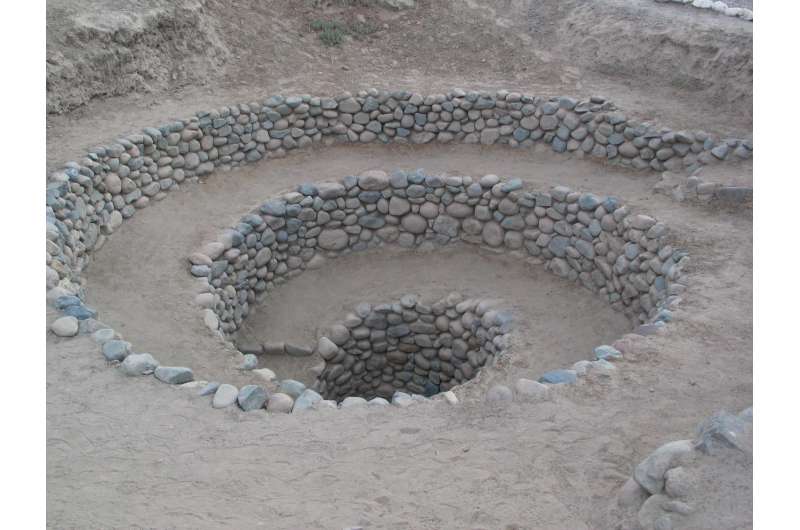April 19, 2016 report
Researchers believe they have uncovered the purpose of puquios in Nasca

(Phys.org)—A team of researchers led by Rosa Lasaponara with the Institute of Methodologies for Environmental Analysis, in Italy has found evidence that suggests that the purpose of the spiral, rock-lined holes called puquios carved into the ground in an area near the 'Nasca lines' in Peru, were part of an ancient water distribution system. In their paper to be published in Ancient Nasca World: New Insights from Science and Archaeology, the team describes their study of the structures using satellite technology and what they believe their findings say about the Nasca people.
The Nasca people lived in the area from sometime before 1,000 BC to approximately 750 AD, which historians have noted, was remarkable because the area is one of the driest on the planet. Prior research has suggested that they were the creators of the famous 'Nasca lines' that cover the desert floor with huge images of geometric shapes, plants and animals. Some have suggested that the massive drawings are also part of a huge water movement project, possibly serving as markings for major parts.
People living in the Nasca region of Peru over the years, and some scientists. have been aware of the puquios for quite some time, many puzzling over their purpose. Most have suggested they likely had something to do with obtaining water, but until now, no one had any idea how that might have come about. Making matters worse was that because they were made with the same materials as the surrounding terrain, it was impossible to carbon date them, which might have proved that they were actually constructed during the time of the Nasca people. To unravel the mystery, the researchers turned to images taken from satellites—that allowed them to get a better perspective of where each of the puquios were in relation to one another.
After much analysis, the team reports that the evicence suggests that the puquios served as part of a vast hydraulic system that carried water in underground canals to where it was needed—either to water crops or into populated areas as drinking water. The puquios, they explained further, caused air to be pulled down into the underground canal system—the wind actually helped to push the water through the system, which meant they served as ancient pumps.
This, the team suggests, indicates that the underground water system allowed the people access to water the whole year round. It also showed that the early people where highly technically advanced and extremely well organized. Making the system work and keeping it going would have required major effort and coordination. They note that some of the puquios were so well constructed that some of them are still in use today.
More information: whc.unesco.org/en/list/700
© 2016 Phys.org




















